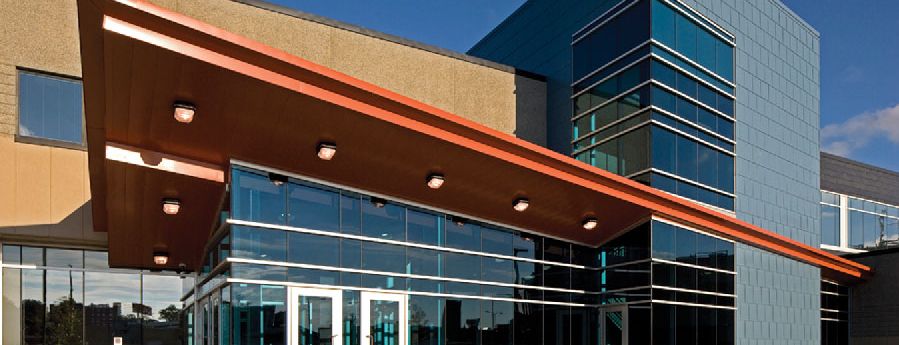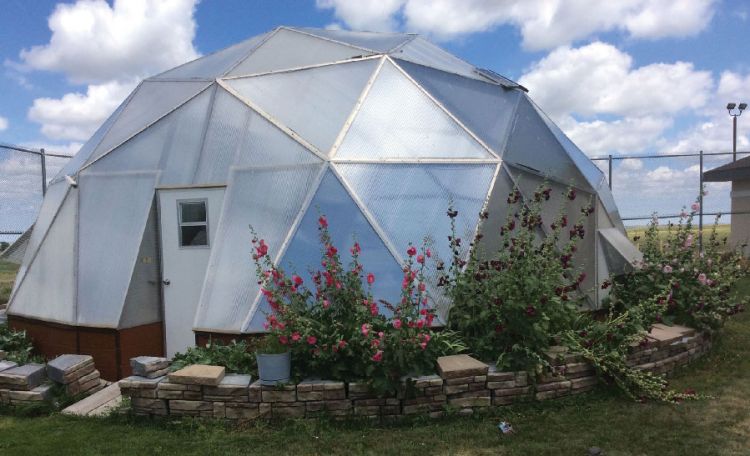Story
Innovate Wellness
Improving health care through community innovation

Since the program launched in 2013, over 100 grantee organizations, each working across a broad range of issue areas, have pursued breakthrough solutions to community problems. Take a closer look at grantees that are focused on different aspects of health care: mental health care, culturally responsive care and family care. These grantee organizations engage their communities to find different answers to a complex question: What can we do to make our health care systems better?
Community Innovation grants give organizations the support to brainstorm, test and launch ideas in partnership with the communities they serve. While grantees’ work varies, the common thread of the program is that it creates room for successful problem-solving at a grassroots level, no matter the issue at hand.
Care Without Stigma
A Saint Paul, Minn.-based public-private partnership of counties, health plan administrators, hospitals, consumer organizations and county agencies is among a growing number of collaborative groups that are changing the way people think about mental illness recovery. Mental Health Crisis Alliance and its groundbreaking Urgent Care for Adult Mental Health embody this thought evolution in everything from client services to facility design. In 2009, MHCA facilitated community conversations to develop the plan for a new mental health care facility. When it opened in 2011, the facility was the first of its kind in the state.
Urgent Care for Adult Mental Health’s services are as varied as the members of MHCA — one of the reasons it stood apart at its inception. Mental health crisis assessment and intervention, crisis stabilization, commitment courts and hearings, and 24-hour phone support are all housed under one roof.
Everything about the facility’s planning was intentional, aimed at decreasing the stigma associated with mental health issues. Natural light pours in through large windows. Flowers bloom in a vase at the front desk. It’s not the cement-walled, stark facility commonly portrayed in movies.

MHCA used a 2014 Community Innovation Grant to introduce Certified Peer Specialists on care teams at Urgent Care for Adult Mental Health. As former mental health clients who work with current clients, peers offer a unique mix of care and mentorship. They serve as positive role models in the recovery process, and help take the stigma out of mental illness.
“They can open doors and get people engaged or open to treatment in a whole different way,” MHCA Project Director Roger Meyer says. “They say they hold hope for people when they can’t.”
Adrienne Prehatney, Mary Jo Rawson and Maria Rosario are three peers who work at the facility, meeting with as many as four clients a day.
“It’s just remarkable to be able to share our lived experience with the clients,” Prehatney says. “It’s really cool to be able to connect with people and to share our stories — it really helps people to share the hope that recovery is possible.”
Employing peers in mental health and crisis care is one facet of a larger movement happening within health care. Another organization on the forefront of this revolution is the Barbara Schneider Foundation. It was formed in response to the 2002 death of Barbara Schneider, a Minneapolis woman who was shot by police during an altercation in a mental health crisis call.
With its 2013 Community Innovation Grant, the foundation developed crisis intervention team (CIT) programming in collaboration with five Native nations in Minnesota, North Dakota and South Dakota. CIT programs bring law enforcement, mental health professionals, clients and their families together to more effectively manage crisis issues and services. The foundation, along with the Oglala Sioux Tribe, Rosebud Sioux Tribe, Bois Forte Band of Ojibwe, Mille Lacs Band of Ojibwe and Prairie Island Band of Dakota, draw inspiration from a successful pilot launched nearly 30 years ago by a police department in Tennessee.
The Oglala Sioux Tribe Attorney General and Department of Public Safety, for example, adopted CIT training into their law enforcement and community processes.
“The goal is improving outcomes, reducing death and injuries in a crisis situation, and reducing the amount of crisis, but it’s a long-term process,” Barbara Schneider Foundation Executive Director Mark Anderson says. “We have seen an impact on how people feel about the hope factor; there are real possibilities that they didn’t see before.”
Culturally Specific Care
Located on the Rosebud Sioux Reservation, the 2015 Community Innovation grantee Native American Advocacy Program (NAAP) is a Native nonprofit that serves tribal people in South Dakota. NAAP’s programming focus is on the health and wellness of Lakota youth. In response to conversations with their youth program participants, NAAP designed a culturally based apprenticeship project that provides career-skills training and valuable work experience.
The Social Empowerment through Economic Development Strategies (SEEDS) project offers 18-month apprenticeships to Lakota youth. The apprenticeships are concentrated in one of three areas: beekeeping, cultural tourism and medicinal herb sales.
NAAP Executive Director Marla Bull Bear says the project grew out of brainstorm sessions between members of NAAP’s Bear Horse Thunder Youth Society (Mato Tasunka Wakinyan Okolakicye). Participants wanted to develop their own social enterprises — ones that reflected their passions and abilities.
Bull Bear adds that participants choose which area they want to work in. “We focus on their strengths and giving them ways to find out what their strengths are,” says Bull Bear.
In designing SEEDS, NAAP leveraged a community resource from the Rosebud Sioux Tribe’s juvenile detention center. Wanbli Wiconi Tipi was known for engaging its youth through a gardening and beekeeping project, and became a valuable partner in NAAP’s effort.

A 2015 Community Innovation grantee itself, Rosebud Sioux Tribe used the support it received from the Bush Foundation to launch its Work 2 Wellness initiative at Wanbli Wiconi Tipi. The benefit of the program is twofold: It teaches youth the value of growing and consuming healthy produce, and it fosters cultural awareness and development.
Miskoo Petite Sr., head of operations at the detention center, says Lakota culture is the most important aspect of the facility’s programming. “We need to teach and instill our traditional Native American values in our young people.”
Harvesting the earth is a practice with deep roots in Native American culture. Wanbli Wiconi Tipi embraces it through hydroponic farming and gardening. Thanks to a 30-foot-high growing dome on the grounds, they are able to extend their growing season by three months.
Petite Sr. says the work is a solution to the many problems the community currently faces: high rates of unemployment, poor nutrition and high rates of diabetes, to name a few. “A lot of learning is experiential, and gardening is a valuable tool to help with rehabilitation,” he says. “This fits into a lot of different sectors of helping our young people.”
The goal of Work 2 Wellness is to benefit the community within and beyond the walls of Wanbli Wiconi Tipi. By teaching detained youth healthy eating habits and skills that promote self-sufficiency, Petite Sr. says they hope to decrease the frequency of these issues in family members and friends. Stimulating the community’s economy is also on their minds.
Wanbli Wiconi Tipi, with the help of several stakeholders, works to locally sell the vegetables grown in its outdoor organic garden and growing dome. In 2015 they had more produce than they knew what to do with — a good problem indeed.
Personalized Treatment
In addition to mental health and culturally responsive care, Community Innovation grantees influence trends in family health care services, using their ingenuity to personalize care for all people.
The Avera Cancer Institute in Sioux Falls, S.D., wants to improve how the state’s rural cancer patients access quality treatment and, in the process, change the course of care delivery. Assistant Vice President Kris Gaster and Robin Prunty, vice president of the Avera McKennan Foundation, held an open meeting where Avera representatives and community members discussed the common barriers that rural cancer patients face. Themes included the challenge of receiving a diagnosis during the height of harvest season, the struggle to find emotional support, and the difficulty in feeling isolated.
“Listening to those types of stories made me think, what can we do better?” Prunty explains.
With a 2015 Community Innovation Grant, the Cancer Services Patient and Stakeholder Advisory Committee was born. The committee is made up of patients, their families, hospital administrators and clinicians who help identify the unique needs of rural patients.
One couple that attended the first meeting explained how they shut down after hearing the word “cancer” during a recent doctor’s appointment. While they didn’t ask questions in the doctor’s office, they had plenty by the time they returned home.
After several other families shared similar experiences, it became clear that creating a call center would help alleviate some of the biggest barriers to accessing critical information. The committee is organizing a database of resources, including support groups and transportation help. The center and its database will provide support, referrals and answers when rural cancer patients call in for assistance.
To fully understand what rural cancer patients commonly grapple with, several Avera oncologists and committee members visited a fifth-generation farm near Parker, S.D., in 2015. The group saw a glimpse of what it’s like to tend to animals, rotate fields and harvest crops.
“They could actually see what a farm is,” Prunty explains about the field trip. “They climbed up on a combine — they got to see it all firsthand.”
Ultimately Avera hopes to engage rural cancer patients more deeply in their treatment. Developing a call center and list of resources, leveraging farmers’ interest in and understanding of genetic research, and listening for ways to improve are the pillars of the project.
“We have hit a nerve in our state with these farmers and ranchers,” Gaster says. “Listening to people in rural and frontier locations is one of the most powerful things that will come out of this. You begin to understand each other and understand the needs and how best to meet those needs.”
Rainbow Health Initiative, a lesbian, gay, bisexual, transgender and queer (LGBTQ) health advocacy organization located in Minneapolis, received a Community Innovation Grant in 2015 to develop a first-of-its-kind set of health care standards for transgender and gender nonconforming communities. The organization collects an annual survey of LGBTQ experiences within health care, and the results from 2014 showed that of 1,859 participants, nearly half reported receiving poor quality of care because of their gender identity.
Hoping to improve this statistic, Rainbow Health Initiative provides LGBTQ cultural competency training to health care professionals. Equity and Inclusion Education Manager EJ Olson oversees this work. It’s work that requires patience and persistence.
“Most of the time there are so many priorities already that centers are trying to adequately meet without being required to do anything around LGBTQ inclusion,” Olson explains. “It really falls to the wayside.”
While this is a legitimate challenge to health centers and staff, Minnesota is a state with non-discrimination laws, Olson points out, and responsive care is a necessity.
After receiving the grant last year, Rainbow Health Initiative developed the Minnesota LGBTQ Health and Human Services Standards of Inclusion. The toolkit for policy makers, health care professionals and patients aims to increase understanding of LGBTQ health care needs.
The standards will be more than just a list of dos and don’ts for clinical practice. They will collect the barriers LGBTQ people face on a daily basis, as well as suggestions for addressing them.
Olson gives the example of gender-neutral signs on bathrooms as a culturally competent change.
“What we see is that the more info that is available and the more layers of oppression people understand, the more LGBTQ folks can see themselves in a space,” Olson explains.
The goal of the document is not to overwhelm health care providers with new policies. Rather, Rainbow Health Initiative hopes to give health center staff the knowledge and understanding to implement LGBTQ-inclusive practices. In the end, the desired outcomes are simple. “Anyone who identifies as lesbian, gay, bisexual, transgender or queer would go seek out services and feel seen, respected, and not be denied care because the provider doesn’t know how,” Olson says.
While the work ahead of Rainbow Health Initiative seems immense, there are health providers in the region that not only adhere to inclusive practices, but also actively advocate for transgender rights.
Family Tree Clinic, a community clinic in Saint Paul, Minn., specializing in reproductive health, is known for its inclusive work in transgender health care.
The clinic, which bases patient fees on income, received a Community Innovation Grant in 2014 that launched its Trans Health Initiative and the Trans Hormone Access Project. The project is a collaborative effort of Family Tree Clinic staff, the Minnesota Transgender Health Coalition, patients and community members with a singular goal: Allow transgender individuals access to gender-affirming hormones based on an informed-consent model.
Currently, patients have to provide a mental health diagnosis in order to obtain hormones at low cost clinics in the region.
Alissa Light, Family Tree Clinic’s executive director, says the Trans Hormone Access Project fixes that. By engaging patients and staff members at the clinic in conversations about the project, the clinic garnered support throughout the Twin Cities, hired a Transgender Health Advocate Damion Mendez to support patients, and began providing hormone care through informed consent.
Mendez joined Family Tree Clinic in 2015, bringing to the position insight from personal experience as a transgender person. “Looking back on it, that was really important to add the Trans Health Advocate to do the advocating around how the program was going to look based on the community listening sessions and based on my own experiences within the medical system,” Mendez says.
With any worthy endeavor, there are bound to be challenges. Possibly the biggest issue facing Family Tree Clinic’s Trans Hormone Access Project is the overall state of health insurance. Light explains that many transgender people are more marginalized and statistically less employed, which leads to high deductible insurance or worse, no insurance at all. Financially speaking, that is hard to keep up with.
“Our health insurance system has not caught up in terms of what it covers for routine care that people have a basic human right to,” says Light.
Despite the obstacle, the clinic hopes to continue providing these services and lead as an example for other health providers in the region and throughout the nation — and the number of people receiving care through the Trans Hormone Access Project is the greatest testament to that leadership.
In the initial stages, Family Tree Clinic hoped to provide services to 20 patients in the pilot year and 35 in the second year. The clinic eclipsed both markers within six months of implementing the program, and currently, the clinic has seen more than 75 transgender patients.
“That’s a lot of people that are being served and getting things that they never thought they would be able to get because of all the barriers to accessing health care for a trans or gender nonconforming person,” Mendez says.
Healthy Ingenuity
These winners of the Bush Prize for Community Innovation represent the widespread advancement of ideas within the health care realm.
Behavior Management Systems, Inc.
Rapid City, S.D.
2013
This mental health care provider launched its 24/7 Crisis Care Center in 2011. The CCC serves patients that need crisis intervention, but don’t require an extended stay. In its first year, the CCC diverted 330 people from a psychiatric ward and 260 people from the emergency room. Ultimately, the program saves everyone money and, most importantly, gets patients the help they need.
“We’re trying to capture those people that were going into the inpatient psych unit but being discharged in less than 24 hours. We saw that as the niche we needed to address.”
–Alan Solano, CEO
Face It TOGETHER Sioux Falls
Sioux Falls, S.D.
2014
South Dakota’s local affiliate of the national addiction care organization takes a collaborative, community-based approach to helping people with addiction. They work with health care providers, community leaders and clients to establish relational treatment for addictions. Their mission — looking at addiction as a disease — empowers patients and providers alike, helping to do away with stigma and isolation.
“It’s about changing hearts and minds about addiction.”
–Julie Schoolmeester, Executive Director
Lakewood Health System
Staples, Minn.
2015
Lakewood Health System’s Choose Health program is an effort to make healthy, locally grown food more available to people in the community. Through partnerships with several health-minded organizations in the region, the large health care provider has harnessed support and passion for decreasing food insecurity in the area. The program refers families to community supported agriculture memberships, which provides access to better food and nutrition.
“How do we impact the health of the community? Everyone wants to do something good, and collectively we can do great things.”
–Teresa Fisher, COO/Chief Nursing Officer
Continue reading
-

Story
Initiating changemakers
How the Initiators Fellowship supports business enterprises that prioritize social and environmental good throughout Greater Minnesota.
-

Note from Jen
Note from Jen: Acknowledging and learning from the boarding school era
The Bush Foundation was invited to the gathering at Gila River...
-

News
Meet the 2024 Bush Prize winners!
Bush Prize winners are doing big things in partnership with their communities.